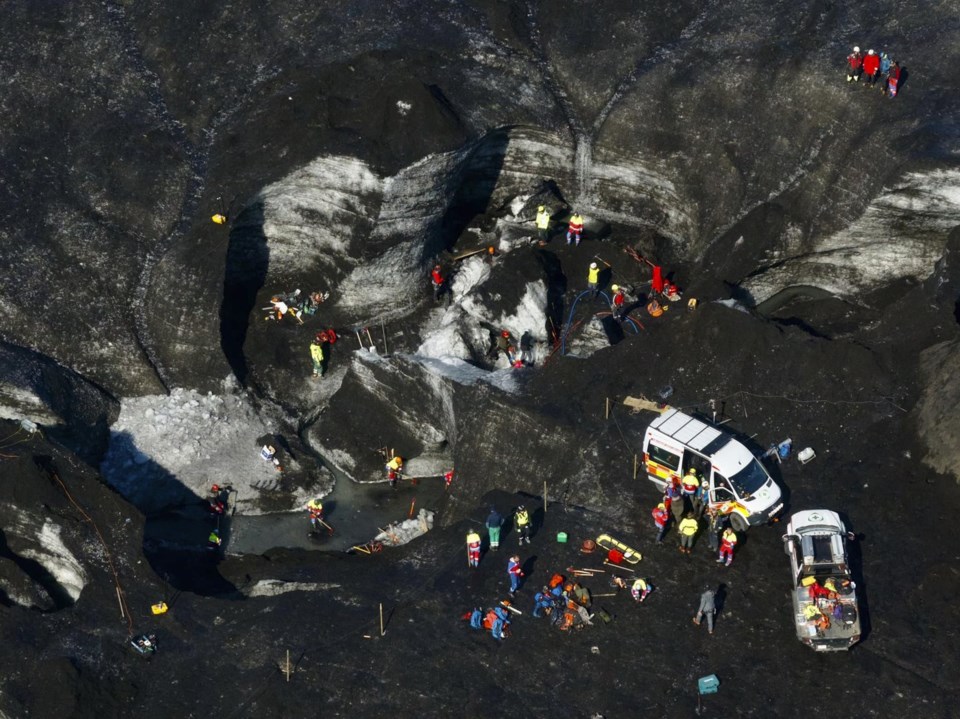LONDON (AP) — Icelandic police on Monday called off the search for anyone trapped in the previous day's collapse of an ice cave that killed one person and injured another, saying that all members of the tourist expedition had been accounted for.
Authorities had initially mounted a large-scale rescue operation, with as many as 200 rescuers sifting through the icy rubble by hand to find two people believed to have been missing.
But police eventually determined that no one was unaccounted for after examining the tour operator's records and finding that only 23 people were on the ice cave tour, not 25 as was first believed. Even so, rescuers continued the search until all of the collapsed ice had been moved to be sure that no one had been left behind.
“The police field manager located at the scene announced that all the ice that was thought to have fallen on the people had been moved," police said. “It has come to light that no one (was) hidden under the ice.’’
The rescue operation began around 3 p.m. local time on Sunday when authorities received reports that an ice cave had collapsed at the Breidamerkurjokull glacier in southeastern Iceland. One man died at the scene and a woman was transported to a hospital in Reykjavik, the capital, by helicopter. Both victims are American citizens, police said.
The search, which was suspended overnight when conditions made it too dangerous, had resumed at about 7 a.m., Icelandic broadcaster RUV reported. Video showed rescuers working inside two large craters surrounded by the sand-blackened ice of the Breidamerkurjokull glacier.
But by the end of the day, they were satisfied that no one else was missing. Police said there had been “misleading information” about the number of people on the trip.
The Association of Icelandic Mountain Guides called for a full investigation and tighter regulations on ice cave tours. Glacier trips during the warmer summer months can be very dangerous, the association said.
The tourism agency is working on a report for the government to discuss regulations regarding trips on the glaciers and especially ice caves tours. The Minister of Tourism Lilja Alfredsdóttir said that the matter will be discussed in parliament.
Ice caves are a popular destination for visitors to Iceland, with tour operators offering customers the chance to “explore the insides of glaciers” and see the blue color and “stunning patterns” in the ice.
Glaciers cover about 11% of Iceland, an island nation in the north Atlantic that sits on the southern edge of the Arctic Circle. The largest is Vatnajokull, which covers 7,900 square kilometers (3,050 square miles). Breidamerkurjokull is a tongue of Vatnajokull that ends at the Jokulsarlon Lagoon, where icebergs constantly break off from the glacier.
Moving rescue equipment and personnel up to the glacier was difficult due to the rugged terrain, and rescuers had to cut through the ice using chainsaws.
The glacier is about 300 kilometers (185 miles) from a volcano that erupted Friday on the Reykjanes Peninsula in southwestern Iceland.
___
Associated Press Writer Marco Di Marco contributed.
___
Keyton reported from Berlin.
David Keyton And Danica Kirka, The Associated Press

